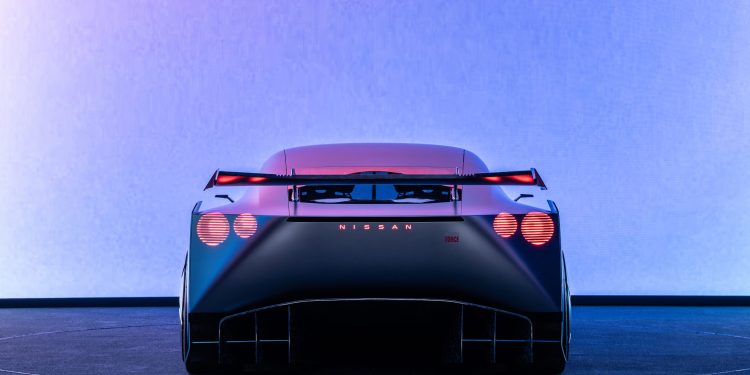Nissan Tech Insights – Tokyo Mobility Show 2023
Words: Kyle Cassidy | Photos: Nissan
Nissan is facing some serious challenges in a fast-changing marketplace. So how is this 90-year-old Japanese giant responding? We went to Tokyo to find out.
The recent Japan Mobility Show saw the domestic car makers roll out a raft of concepts covering most segments, and most of them electric.
We particularly liked the many sportsters on show, evoking memories of the JDM scene in the 1990s.
There was what looked like an MR-2 reboot from Toyota, a new MX-5 from Mazda, and Honda dusted off its Prelude badge.
But the real star was Nissan’s Hyper Force, a clear intention to keep the GT-R alive. It too will go electric and formed part of a suite of ‘Hyper’ concept cars from Nissan, all electric, while showing the breadth of Nissan’s portfolio.
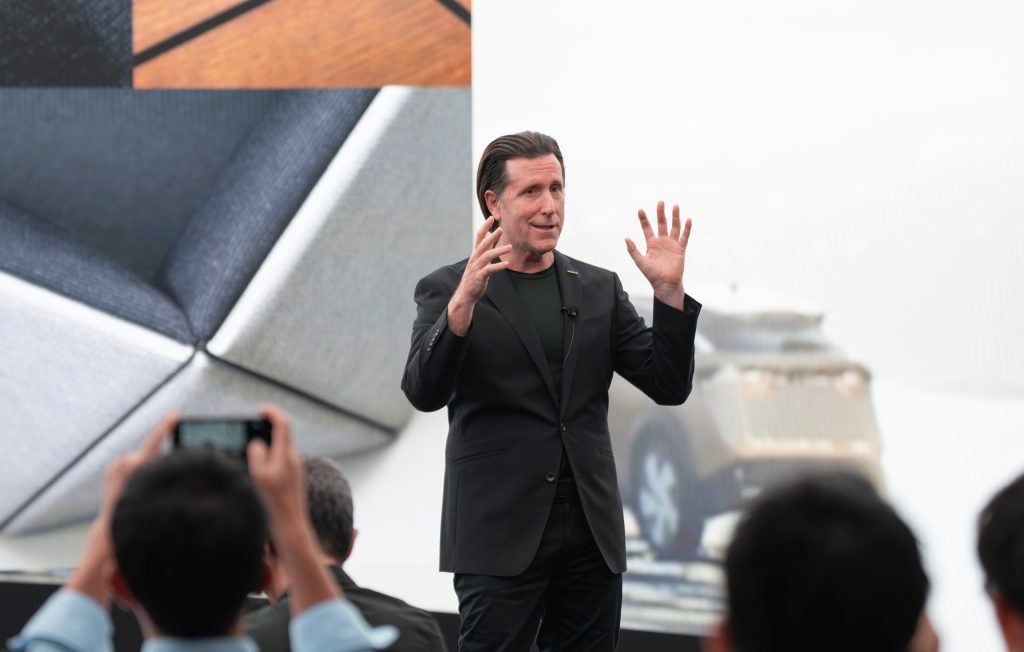
Alfonso Albaisa, senior vice president for Global Design for Nissan Motor Corporation, said the Hyper concepts form an ‘electrified offensive strike; our vision is to have a daring move forward’. And the company is very much focused on EV and e-Power technology for its future.
It’s unusual for a company to roll so many concepts at once, but Nissan CEO, Makoto Uchida, told us that expectations are changing fast and the concepts show what Nissan can deliver, with a range of vehicles appealing to varied needs.
Uchida said the market for electric vehicles was moving faster than the company had expected, stating that Chinese manufacturers had provided a wake-up call for companies like Nissan, especially on cost competitiveness.
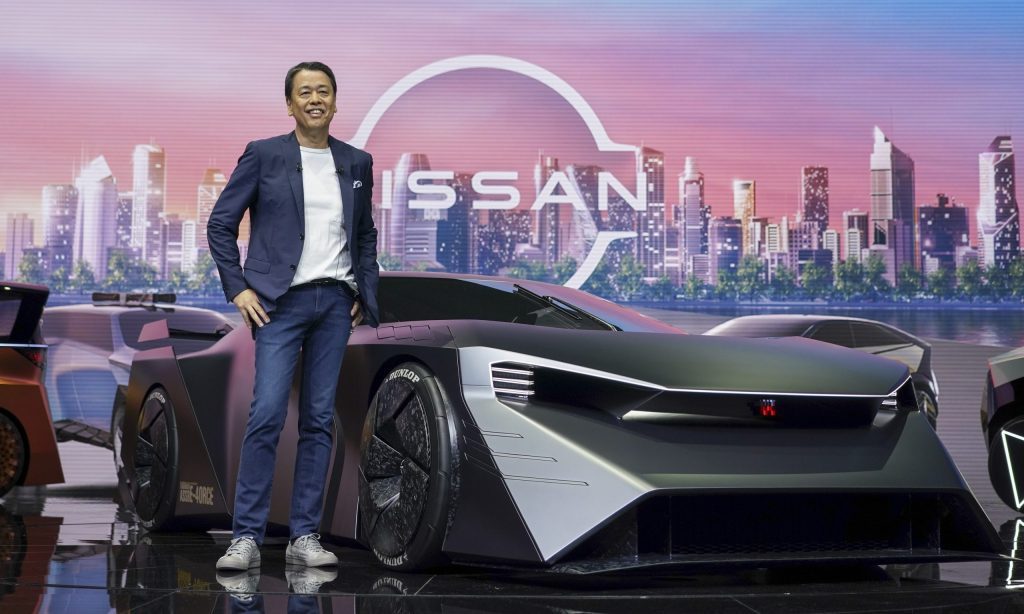
It was interesting to note that, apart from BMW and Mercedes-Benz, the only other foreign car maker present was BYD, and it featured a huge stand.
As an ‘EV pioneer’, Uchida said Nissan needed to “change our way of constructing EVs and be competitive in each market. We’re looking at affordable pricing for EVs across the world. This is one of the key things going forward.”
Uchida noted the fragmented nature of the world with markets moving at different pace and with different regulations.
This has prompted Nissan to change its management structure to help speed up development and decision making for the various regions.
In on electrification
A big part of its plan to reach carbon neutrality 2050 is the electrification of its cars. Nissan is working on simplifying the development of its electrified drivetrains, helping bring its EV price down and also remove the premium for the e-Power models.
Toshihiro Hirai, VP of powertrain and EV engineering, said that most of Nissan’s development programmes for pure combustion engines have ceased as it looks to accelerate the EV and e-Power growth.
However, this is not to say combustion engines are done for Nissan, with work continuing on diesel for Asian pick-up markets. As yet, the capability and range provided by a diesel can’t be topped, he said.
Hydrogen has come to an end for Nissan, Hirai saying it’s not a feasible solution for its business. And while synthetic fuels provide an opportunity to reach carbon neutrality, he says cost and infrastructure are major issues, and believes it may be a better fit for the aircraft industry.
And so the focus is on EV and e-Power, the latter helping them offer a low-emissions option in markets where EV adoption is slow, and where the infrastructure is underdeveloped.
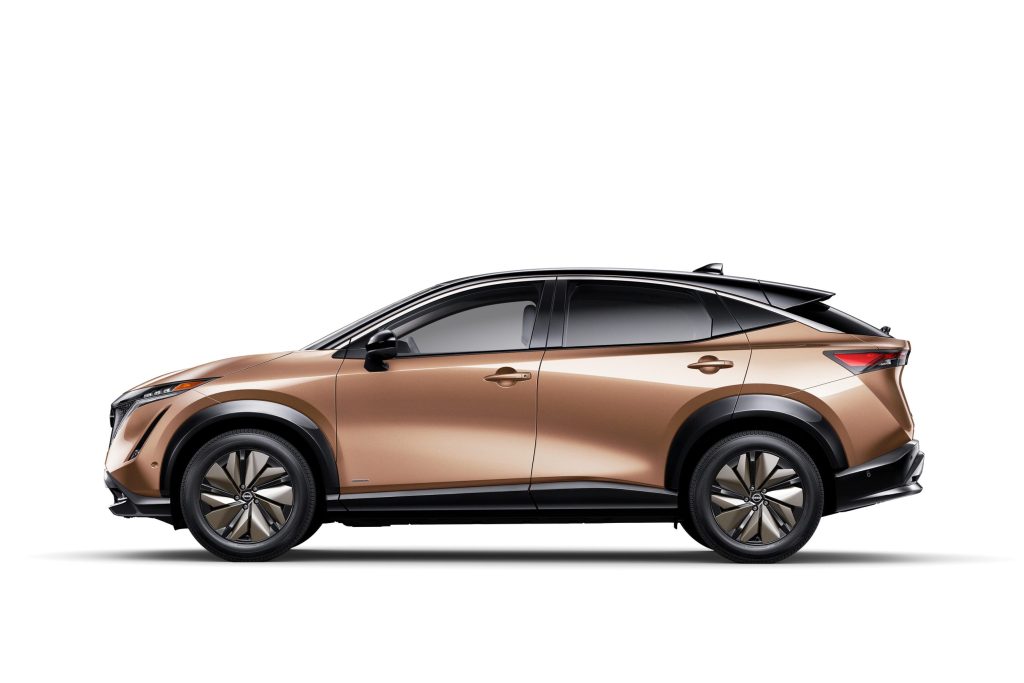
EVs big and small
We got a brief shot at two of Nissan’s latest EVs in Tokyo, one being the Ariya (due here imminently) with the Pro Pilot 2 system. This uses sensors, radar and cameras to give you a ‘hands off’ driving experience on motorways, the company calling it an ‘on ramp to off ramp’ system.
Once you’re on the motorway, select the cruise and the display gives you the usual signal that the active function is working. When the display turns from green to blue, it’s okay to take your hands off the wheel.
It was a fairly straight bit of road we drove on so we can’t report on its cornering skills, but it tracks calmly and doesn’t prompt you every 10 seconds to take the wheel. The system is monitoring the cabin to make sure you haven’t hopped in the back for a sleep.
The one biggie is that it requires the road to have been digitally mapped (hence it is only working on major motorways). So don’t expect the feature on NZ-spec cars, or for the system to work when these turn up as used imports.
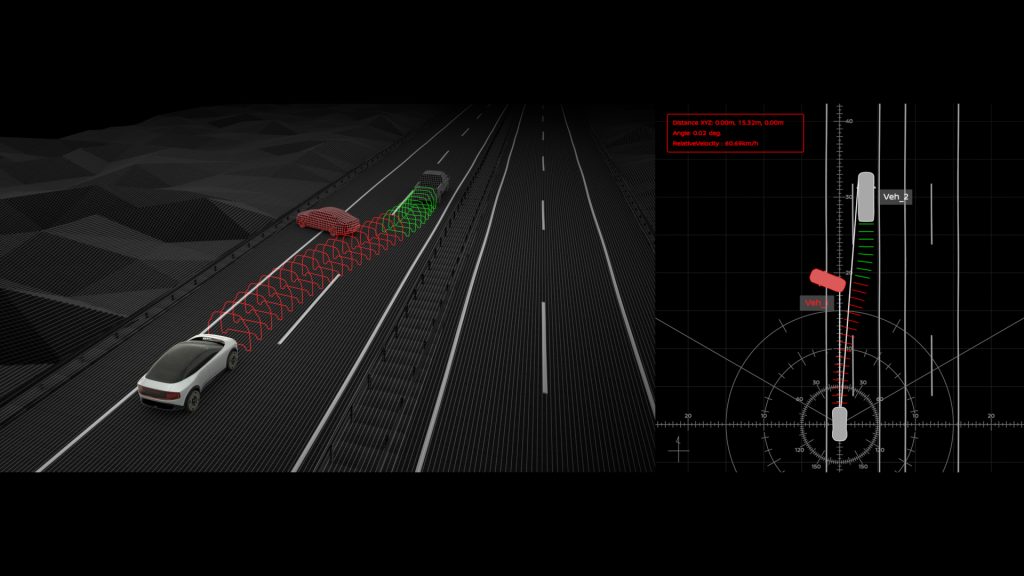
As to the Ariya itself, it’s very polished and refined, premium inside and spacious front and rear. We’ll report more next month when we drive it on home turf.
The other we drove was the Sakura, Japan’s best selling EV. The diminutive kei car makes up 40 per cent of the Japanese market, but EVs in the space are a rarity.
This is small, 3.4m long and not quite 1.5m wide, but it has a long wheelbase to maximise space. The little motor delivers 47kW (the kei car max) but torque of 195Nm is almost triple the segment norm.
It weighs just 1080kg, a lightweight EV then, as it has a small 20kWh battery and a 180km range. With 80 per cent charge, the DTE was showing 127km when we took the wheel.
This has more than enough squirt to flow freely in traffic, small dimensions helping it weave in and out of lanes and the turning circle is ridiculously tight.
It has great outward vision too, and a few active driver aids.
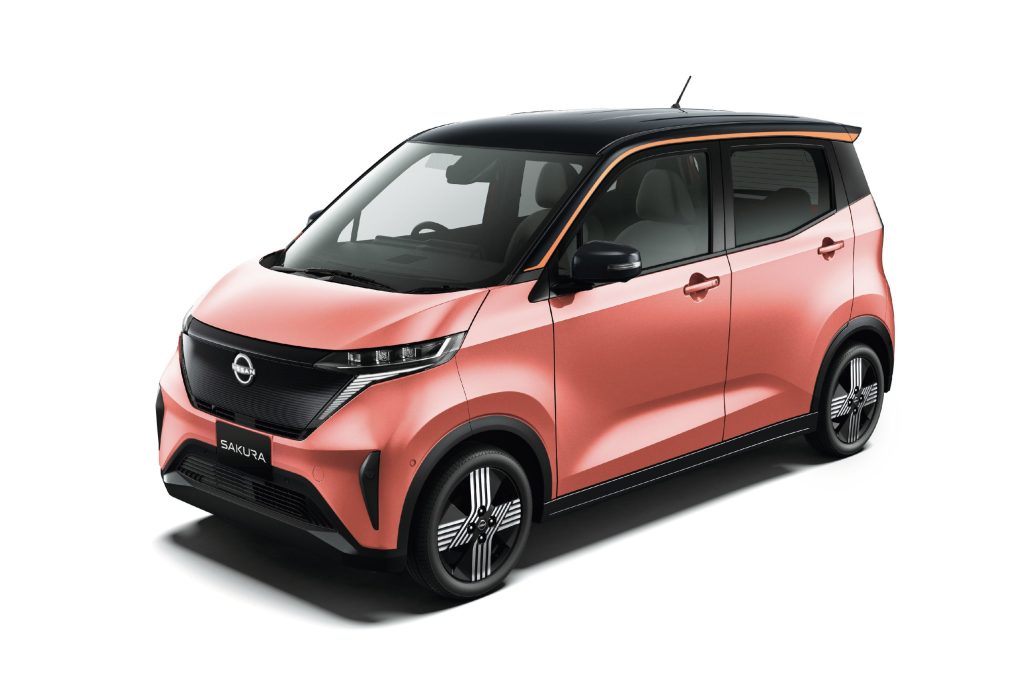
This is a kei car, so the quality is ‘price sensitive’, the doors with a distinctly tinny feel, the road noise noticeable, even at 50km/h.
While you’re rather close to your front passenger, rear seat leg room is more than generous but there is only room for two back there while some glove boxes are larger than the boot.
This works in a big city like Tokyo where an average owner of the Sakura does just 24km a day, apparently. And the price helps too, just $NZ27k before the Japanese rebates are applied (which differ throughout the country).
Power sharing
Nissan’s twin-pronged electric strategy sees its e-Power hybrid entering its third generation soon. The emphasis in the new gen is on sharing more components with the pure EV drive module to bring about a reduction in price.
They have brought all the different components into one casing, making it smaller, lighter and more rigid, helping deliver a 30 per cent improvement in noise and vibration.
That’ll help it drive more like an EV. Hopefully they are working on noise suppression too. These E modules will use a common motor, inverter and reducer gear but the e-Power needs a generator, increaser gears and dual inverters.
This makes the e-Power electrical unit bigger, heavier and more expensive than that of the EV. But the e-Power counters with a much smaller (and cheaper) battery pack.
The e-Power idea has the ability to scale up, so maybe we’ll see an e-Power Pathfinder one day. It’s not being developed for use with diesel engines however, so expect no Navara e-Power.
Smart Energy
Nissan was the first to introduce bi-directional charging in 2012 and the firm wants to take this next level in the future with intelligent charging management.
This, it says, will help maximise the value of an EV. It’ll help manage charging off peak and integrate with solar panels, using the car’s battery as storage to feedback to the house to manage the peaks and troughs of the electricity network.
But Nissan envisions a future ‘energy economy’ of sorts, one where you’ll pull up to your favourite cafe, (recommended to you by the on-board AI assistant who also directs you there), plug your car in to the store’s outlet and exchange a kWh or two of energy from your battery to the cafe in exchange for your coffee.
Okay, it’s a bit far fetched for now but the integration of AI learning into the software will be better able to predict your energy needs in relation to your driving and habits.
This will manage the charging to deliver enough electricity at the right price to ensure you can do what you need to do, managing range anxiety, while also ensuring you only use as much energy as you really need.
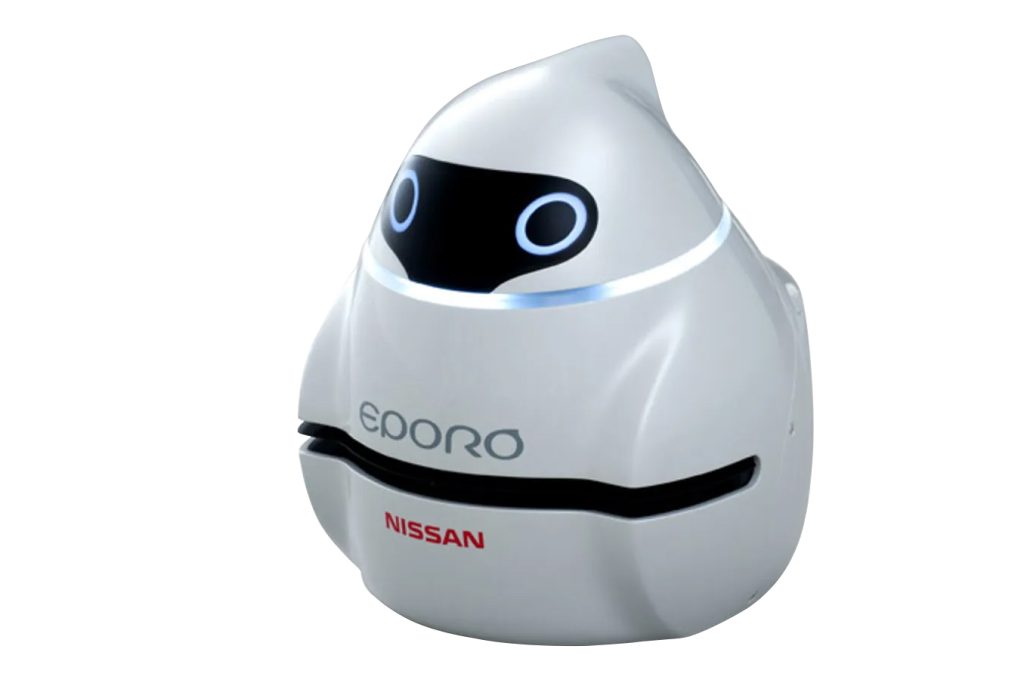
This will use info gathered from the vehicle’s telematics recording drive data (not just where you go, but how you drive) and, with a combination of AI learning and user inputs, work out and manage your requirements.
Owners often say it takes a little more planning to get about in an EV, so this will do all that for you.
NissanConnect is an app-based interface that uses a chatbot to simplify the user input, a cute little creature called Eporo asks questions requiring simple yes or no responses to determine your route.
If you need a charge, it will find you a charging spot and calculate your energy requirement to make it home.
Safer, smarter
Nissan is working on producing its first cars with Lidar technology, due ‘sometime’ in the mid-2020s. Its inclusion in the active driving aids system will help advance accident mitigation.
Lidar will allow the car to recognise when something suddenly appears in your path and help the other systems actively steer the vehicle out of harm’s way.
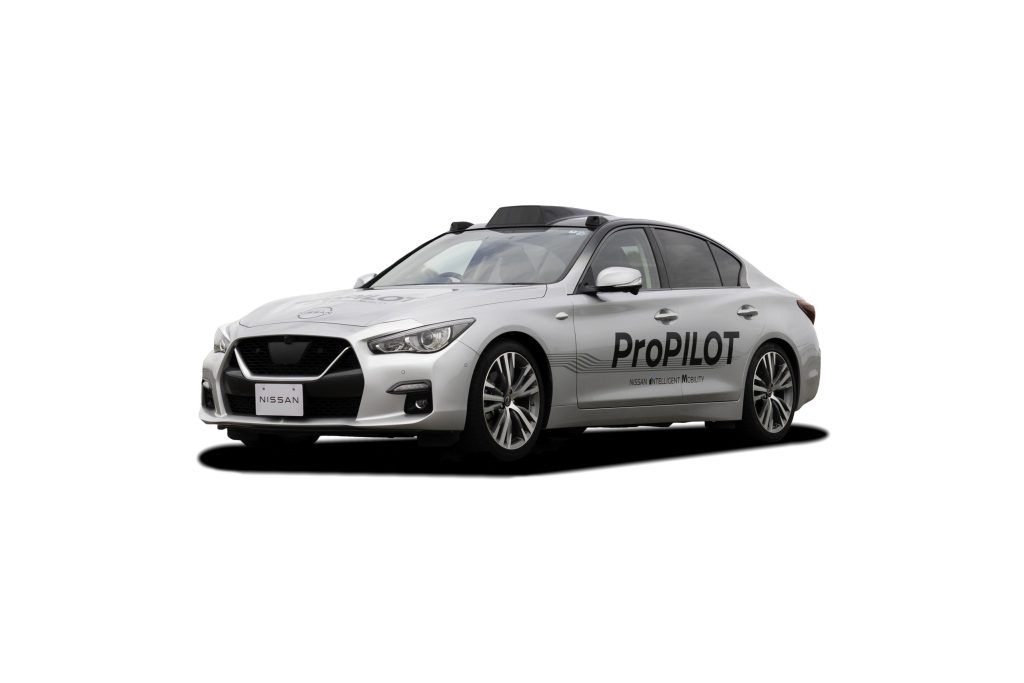
However, such technology still requires the Hi-Def mapping of highways to work, so likely it’ll take longer for this tech to reach far-flung, uncharted frontiers like NZ.
There are a few things to work through including managing the thermal load of this sophisticated sensor. It will be interesting to see how they integrate this as it will be part of the roof line, rather than something behind the screen.
Big screen experience
Those that bemoan the encroachment of large screens into the interior really aren’t going to like future Nissan products as these are only going to get bigger, more enveloping. They are talking up a ‘phygital user interface’, a mash-up of physical and digital.
Think more immersive maps when you bring up the sat nav view on the instrument panel, and infinitely more customisation. You’ll even be able to bring your own digital creations to life too.
Designers embrace the movement also. Albaisa said the customer is changing.
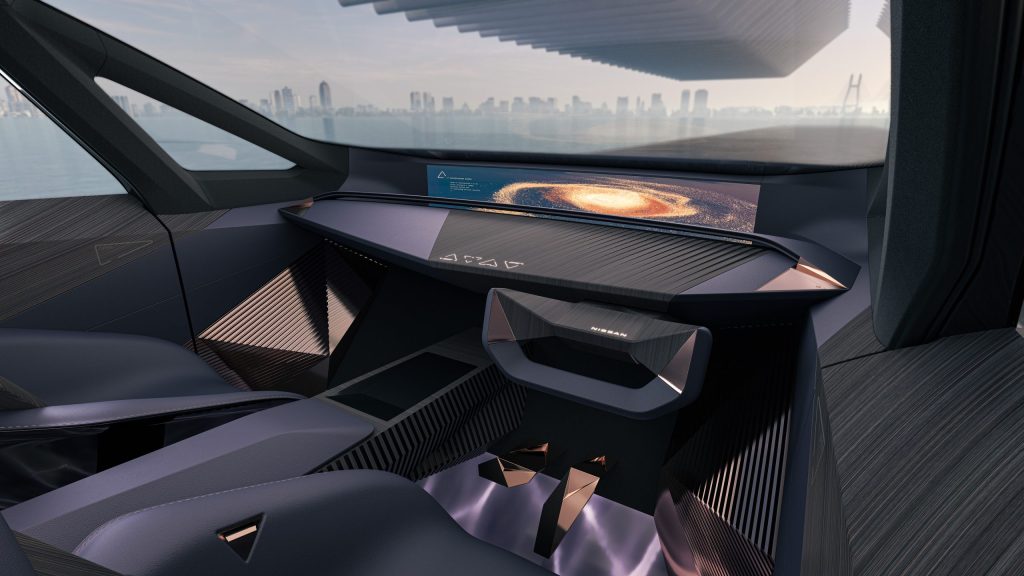
“They want more things in the car. Everything they do on their devices, the car should do too. The big screen is a window to all the things they want to see and do.”
He sees it as a way to better involve the passengers as well.
The holy grail
Nissan says its in-house development of all-solid state batteries (ASSB) will be a ‘game changer’. In the works since 2022, field trials in vehicles are slated to begin next year, before a targeted production date of 2028.
They hope to be first to market, though Toyota and BMW, among others, are also working on this.
The promises of ASSB tech include a halving in the size and weight of battery packs compared with conventional lith-ion tech and a reduction in cost, given these smaller yet more energy dense batteries use less material overall.
Life expectancy is longer too. These ASSBs will recharge up to three times faster, with the ability to keep fast charging beyond 80 per cent. With higher energy outputs, they discharge faster so can provide more power for the motor.
Perfecting the stability of the chemistry is key. Because a solid electrolyte takes the place of the electrolyte solution in an ASSB, the cathode/anode materials and the solid electrolyte must be uniformly distributed, and this relationship between the materials must be maintained.
That’s the hard part that needs perfecting.
The designers are happy about the prospect of ASSB tech too, giving them more freedom. “EVs are getting bigger, taller [to accommodate large batteries], so solid state will give us more freedom to design,” says Albaisa.
Currently he says they are squeezing out every mile with aerodynamic designs, but the ASSB will allow them more freedom ‘to do a box’ and still meet all their targets.
ASSB is a good opportunity for sports cars given their energy density, weight and compactness while such tech could make an EV Patrol an option too given solid state gives the ability to work in higher temperatures, and deliver the power and range needed while not blowing the weight out.
This article first appeared in the November 2023 issue of NZ Autocar Magazine


